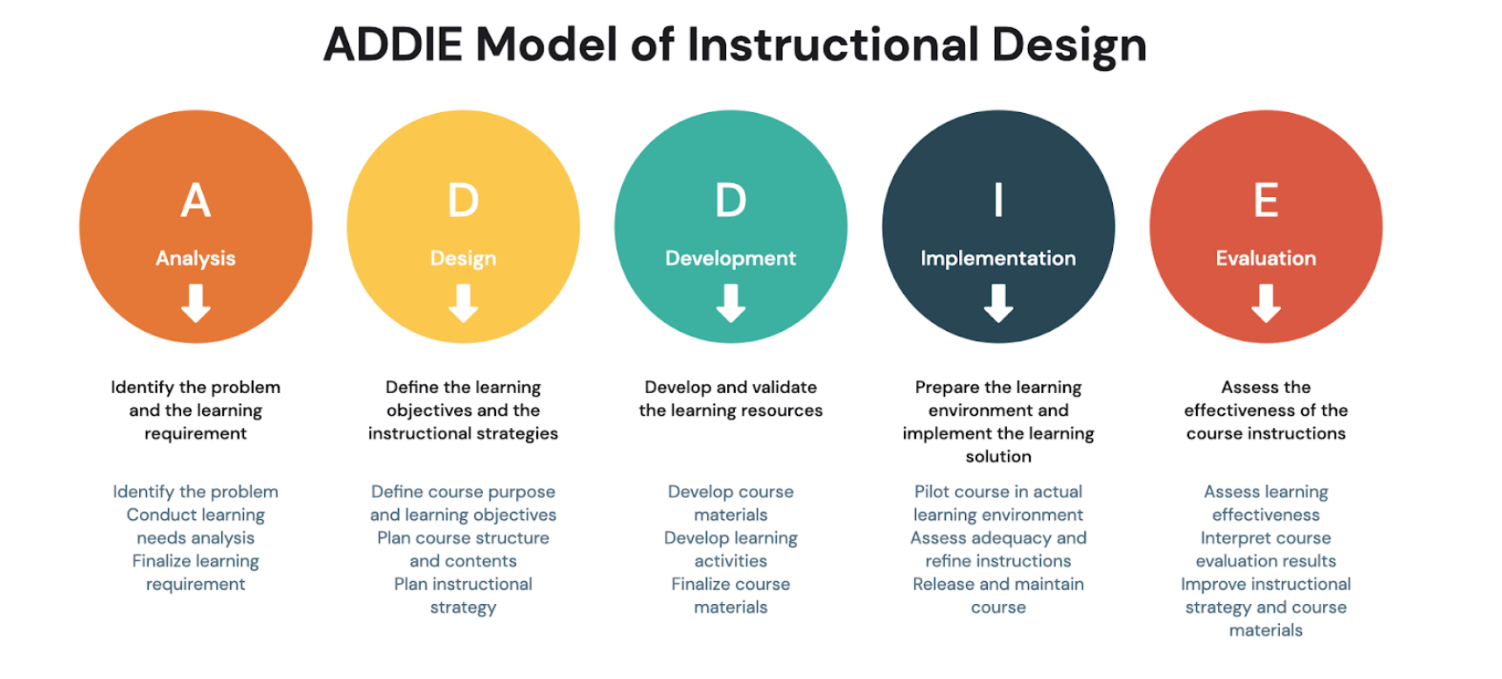WGU C232 OA Study Guide - 2025 | Key Employment Laws, Workforce Forecasting, and the ADDIE Model📖
Business operations maintain continuous efficiency through Human Resource Management which selects and positions employees with appropriate qualifications for suitable positions. This guide examines three vital HR concepts starting with Key Employment Laws and following with Workforce Forecasting and ADDIE Model system application.
- Key Employment Laws protect employees from discrimination and unfair treatment. From Title VII of the Civil Rights Act to the Americans with Disabilities Act (ADA), HR professionals ensure compliance to create fair workplaces.
- Workforce Forecasting helps businesses avoid staffing crises. Using statistical methods like linear regression and judgmental techniques like the Delphi method, HR predicts future staffing needs to keep operations balanced.
- The ADDIE Model structures employee training and development. Whether onboarding new hires or upskilling employees, ADDIE ensures learning is structured, measurable, and effective.
So, buckle up as we explore these critical HR concepts. Whether you’re preparing for WGU C232 OA questions or just curious about HR, this guide has you covered!
How to Use This Guide for the WGU C232 OA Exam? 📖
The C232 Introduction to Human Resource Management OA exam at WGU evaluates your understanding of employment law, workforce planning, and training development models. This guide simplifies the key concepts of key employment laws (Civil Rights Act of 1964 (Title VII), Age Discrimination in Employment Act (ADEA), Americans with Disabilities Act (ADA)), forecasting workforce needs (Statistical Methods: Linear regression, productivity ratios, Judgmental Techniques: Managerial estimates, Delphi technique), and the ADDIE model to help you grasp the topics tested in the exam.
We also provide exam-style questions and practical applications to ensure you’re fully prepared for the questions on the WGU C232 OA exam.

Key Employment Laws: A Guide for WGU C232 Students 📝
The standards and protections of workplace rights that employees need to function exist under employment laws that stop discriminatory actions and provide fairness in the workplace environment. This section investigates three critical employment legislations beginning with Title VII of the Civil Rights Act from 1964 accompanied by the Age Discrimination in Employment Act (ADEA) followed by the Americans with Disabilities Act (ADA). These statutes form essential foundations for protecting workplace rights and combating discrimination in the workplace.
Title VII of the Civil Rights Act of 1964
Title VII of the Civil Rights Act of 1964 served as a historic law to advance equality while eliminating discrimination. Title VII, a key section of this law, focuses specifically on workplace discrimination.
What Does Title VII Do?
Title VII makes it illegal for employers to discriminate based on:
- Race
- Color
- Religion
- Sex (including pregnancy)
- National origin
This law applies to employers with 15 or more employees, including state and local governments, labor organizations, and employment agencies.
How Does It Protect Employees?
- Hiring & Employment Decisions – Employers cannot make hiring, firing, promotion, or compensation decisions based on the above characteristics.
- Hostile Work Environment – A workplace cannot be filled with intimidation, ridicule, or insults based on race, gender, or other protected traits.
- Sexual Harassment – Unwanted sexual advances or conduct creating an abusive work environment are prohibited under Title VII.
- Reasonable Accommodations – Employers must make reasonable accommodations for religious practices, as long as it doesn’t cause undue hardship.
- Retaliation Protection – Employees cannot be punished for reporting discrimination or participating in an investigation.
Enforcement & Remedies
The Equal Employment Opportunity Commission (EEOC) enforces Title VII. If an employee experiences discrimination, they can file a complaint with the EEOC. Employers found guilty of violating Title VII may be required to provide back pay, reinstatement, or compensatory and punitive damages.
The Equal Employment Opportunity Commission (EEOC) functions as the Title VII enforcement agency. The Equal Employment Opportunity Commission serves as the entity to handle complaints from employees who face discrimination at work. An employer found violating Title VII can be ordered to pay employees their back pay and should also give them their job back while facing damages that may include both compensatory and punitive amounts.
Age Discrimination in Employment Act (ADEA)
Under the Age Discrimination in Employment Act (ADEA), organizations must protect all employees who are 40 years or older against unequal treatment connected to their age.
What Does ADEA Cover?
- Hiring & Firing – Employers cannot refuse to hire or terminate someone simply because of their age.
- Promotions & Compensation – Older employees must be given the same opportunities for raises and promotions as younger workers.
- Harassment – A workplace cannot create a hostile environment for older workers through teasing or unfair treatment.
- Layoffs & Reductions – Employers must not single out older employees when cutting staff.
- Retaliation Protection – Just like Title VII, the ADEA ensures that employees cannot be punished for filing an age discrimination complaint.
Who Must Follow ADEA?
This law applies to:
- Private businesses with 20 or more employees
- Federal, state, and local governments
- Employment agencies and labor organizations
What Happens If Employers Violate ADEA?
Age discrimination by employers enables employees to submit a complaint to the EEOC. The legal remedies in these cases include payment reparations along with damage reimbursements together with an opportunity to return to the previous employment position.
Americans with Disabilities Act (ADA)
Through the Americans with Disabilities Act (ADA) disabled people gain equal opportunities because the law protects their rights in both employment situations and public transportation areas along with other access points.
Key Protections Under ADA
- Prohibits Discrimination – Employers cannot refuse to hire, fire, or mistreat employees because of a disability.
- Reasonable Accommodations – Employers must adjust the work environment or job duties to accommodate employees with disabilities, as long as it doesn’t cause undue hardship. Examples include:
- Modifying work schedules
- Installing ramps or accessible technology
- Providing interpreters or assistive devices
- Medical Privacy – Employers cannot ask about disabilities during job interviews. Medical exams are only allowed in certain situations.
- Protection from Retaliation – Employees cannot be punished for requesting accommodations or reporting ADA violations.
Who Does the ADA Cover?
- Employers with 15 or more employees
- Employees or applicants with physical or mental impairments that limit major life activities like walking, seeing, or speaking
- Individuals with a history of disabilities or those perceived as disabled
How is ADA Enforced?
The EEOC handles ADA complaints. If an employer violates the ADA, they may be required to provide:
- Job reinstatement
- Back pay
- Compensation for emotional distress
Importance For C232 OA
All workplaces benefit from worker protection when employers follow Title VII, ADEA, and ADA employment laws. Through these laws, businesses gain the tools to develop inclusive workplaces while employees obtain protection from discrimination in their workplaces. To pass WGU C232 OA questions you need to understand these laws since they enable you to answer workplace compliance scenarios effectively. HR professionals utilize forecasting workforce needs to predict upcoming staffing challenges which will be explored throughout this section.
Forecasting Workforce Needs: A Guide for WGU C232 Students📝
Forecasting workplace requirements stands as an essential operational need for Human Resource Management (HRM). Through workforce forecasting organizations can secure their future employee needs by hiring the correct number of workers who possess suitable skills and will join at specific times. The following section discusses workforce forecasting methods with an analysis of linear regression techniques together with productivity ratios and managerial predictions and the Delphi technique.
Why is Workforce Forecasting Important?
Organizations cannot afford to be caught off guard by staff shortages or excess workforce. Workforce forecasting helps businesses:
- Plan for hiring and training needs.
- Allocate resources efficiently.
- Align staffing with strategic goals.
- Prepare for economic fluctuations and market changes.
Quantitative Methods of Workforce Forecasting
1. Linear Regression
Linear regression functions as a statistical method that assists human resources professionals in making workforce predictions through historical data analysis. The technique connects two variables which represent employee numbers and revenue expansion for future workforce prediction purposes.
Example:
- A retail company might use linear regression to analyze how sales volume impacts workforce requirements. If historical data shows that a 10% increase in sales leads to a 5% increase in required staff, HR can plan accordingly.
Benefits:
- Provides data-driven insights.
- Helps identify long-term staffing trends.
- Reduces guesswork in workforce planning.
2. Productivity Ratios
Productivity ratios help HR professionals measure the efficiency of their workforce. This method calculates the output per employee and uses that ratio to estimate future workforce needs.
Common Productivity Ratios:
- Revenue per employee = Total revenue ÷ Number of employees.
- Profit per full-time equivalent (FTE) = Total profit ÷ Number of FTEs.
Example:
- If a company generates $1 million annually with 50 employees, their revenue per employee is $20,000. If revenue is expected to increase to $1.2 million, HR can estimate how many employees they will need to maintain efficiency.
Benefits:
- Provides a clear measure of workforce efficiency.
- Helps identify overstaffing or understaffing issues.
Qualitative Methods of Workforce Forecasting
1. Managerial Estimates
Managerial estimates rely on HR managers and department heads to forecast staffing needs based on their experience and knowledge of industry trends.
How It Works:
- Managers analyze business goals, upcoming projects, and potential retirements.
- They estimate how many employees will be needed in different departments.
Example:
- A software company planning to develop a new product may ask managers to estimate the number of additional developers required over the next two years.
Benefits:
- Allows for flexibility and human judgment.
- Useful when historical data is unavailable or unreliable.
2. Delphi Technique
The Delphi technique is a structured forecasting method that gathers input from a panel of experts. The goal is to achieve consensus on future workforce needs through multiple rounds of anonymous feedback.
How It Works:
- A facilitator collects forecasts from experts anonymously.
- The responses are summarized and shared with the group.
- Experts adjust their predictions based on feedback.
- The process repeats until a consensus is reached.
Example:
- The Delphi technique enables healthcare organizations to evaluate nursing staff deficiencies through information collected from executive administrators together with human resources officials and industry professionals.
Benefits:
- Reduces bias and influence from dominant voices.
- Ensures a well-rounded, expert-driven forecast.
Combining Methods for Accurate Forecasting
Many organizations use a hybrid approach by combining quantitative and qualitative methods to improve forecasting accuracy. Some examples include:
- Using linear regression for data analysis, then verifying results with managerial estimates.
- Applying productivity ratios, then refining the forecast with Delphi technique insights.
Importance For C232 OA
The ability to predict future organizational challenges becomes possible through workforce forecasting procedures. HR professionals apply linear regression and productivity ratios and the Delphi technique and managerial estimates in combination to develop data-centered strategic workforce decisions.
Students preparing for WGU C232 OA questions need to understand these workforce forecasting techniques as fundamental knowledge of human resource planning. Subsequent to this discussion we will examine how the ADDIE Model supports training development for employee improvement.
Tired of reading blog articles?
Let’s Watch Our Free WGU C232 Practice Questions Video Below!

The ADDIE Model: A Guide for WGU C232 Students📖
HRM depends on training and development as essential tools to provide employees with the required competencies for success. The ADDIE Model represents a systematic framework that enables HR professionals to create and deliver productive training programs through its five elements. None of the ADDIE process steps can be omitted from the creation of effective learning experiences because the abbreviation stands for Analyze, Design, Develop, Implement, and Evaluate.
Why Use the ADDIE Model?
The ADDIE Model ensures that training programs are:
- Systematic – It follows a structured approach to avoid missing key components.
- Goal-Oriented – Every phase aligns training programs with organizational objectives.
- Measurable – It includes evaluation phases to track effectiveness and make improvements.
- Adaptable – The model can be applied to various training methods, including in-person workshops and online learning.
- Scalable – It works for small businesses as well as large enterprises, ensuring training programs are effective at any scale.
Organizations that implement the ADDIE Model benefit from improved employee performance, higher engagement, and better business outcomes. Since training programs require time and resources, using a proven methodology like ADDIE ensures that those investments deliver measurable results.

The Five Phases of the ADDIE Model
1. Analyze
The first step of the ADDIE Model exists as its essential core element. HR professionals perform training needs evaluations to detect skills deficits while creating specific performance targets.
Key Activities in the Analysis Phase:
- Conducting performance and learner analyses.
- Identifying workplace challenges and training goals.
- Determining whether training should be online, in-person, or a hybrid model.
- Assessing the existing skill levels of employees to understand who needs training and why.
- Gathering input from employees, managers, and industry experts to ensure training aligns with business needs.
Example:
- If an organization notices decreasing productivity, HR may analyze employee performance and determine that additional training in time management skills is required.
2. Design
In the Design phase, HR professionals and instructional designers plan the training content, structure, and delivery methods.
Key Elements of the Design Phase:
- Defining learning objectives aligned with business goals.
- Structuring the training content logically.
- Choosing appropriate instructional methods (e.g., workshops, e-learning, simulations).
- Outlining methods for measuring success.
- Developing a detailed training schedule and assessment strategy.
Example:
- If a company is implementing a new HR software system, the training design might include interactive video tutorials and hands-on practice sessions.
3. Develop
The Development phase involves creating the actual training materials based on the design plan. This could include written content, e-learning modules, videos, quizzes, or interactive simulations.
Key Considerations in the Development Phase:
- Ensuring training materials are engaging and user-friendly.
- Incorporating real-world examples and case studies.
- Using multimedia elements like videos, animations, and graphics.
- Conducting pilot tests to refine training materials before full implementation.
- Adjusting materials based on employee feedback and organizational needs.
Example:
- If employees need customer service training, HR may develop role-playing exercises to simulate real customer interactions.
4. Implement
The Implementation phase marks the distribution of the training program to organization personnel. Employees and trainers need complete access to necessary educational resources and support in order to succeed.
Key Steps in the Implementation Phase:
- Conducting training sessions or launching e-learning courses.
- Providing facilitators or trainers with guidelines.
- Ensuring employees have access to training materials.
- Tracking participation and engagement to measure initial effectiveness.
- Addressing technical issues or logistical challenges during training delivery.
Example:
- For onboarding new employees, HR may create an interactive orientation program introducing company culture, policies, and job responsibilities.
5. Evaluate
The Evaluation phase measures the effectiveness of the training program. It helps determine whether employees have successfully acquired new skills and whether the training needs improvement.
Key Aspects of the Evaluation Phase:
- Collecting feedback through surveys or assessments.
- Measuring employee performance improvements.
- Making necessary adjustments to training programs.
- Identifying areas for continuous improvement to keep training relevant.
- Assessing return on investment (ROI) by linking training results to business performance.
Example:
- After a leadership training program, HR might assess whether managers demonstrate stronger communication and decision-making skills.
Benefits of Using the ADDIE Model in HR
- Structured Development – Ensures that every aspect of training is well-planned.
- Clear Objectives – Training is aligned with business needs.
- Measurable Outcomes – Success is tracked and analyzed.
- Continuous Improvement – Feedback loops help refine training programs over time.
- Adaptability – The model can be applied across different industries and learning formats.
- Improved Employee Performance – Ensures employees gain valuable skills to enhance job performance.
- Higher Employee Engagement – Well-designed training keeps employees motivated and committed to their growth.
Imporatance For C232 OA
The ADDIE Model is a powerful tool in HR for creating effective training programs that align with business goals and employee development. By following its structured approach, organizations can ensure their workforce remains skilled and competitive. If you’re preparing for WGU C232 OA questions, understanding the ADDIE Model will provide valuable insights into training and development strategies.
Next, we will explore how HR professionals align learning programs with organizational strategy to enhance overall business performance.

Final Thoughts: Prepare for Success in WGU C232 OA📖
Your success in WGU C232 OA depends on your ability to master Key Employment Laws Workforce Forecasting and the ADDIE Model because these three concepts serve as fundamental requirements for every HR professional. Learning these concepts through final assessment preparation enables better performance in genuine workplace human resources scenarios.
Take the time to grasp these concepts thoroughly, review key details, and practice applying them. Workforce forecasting ensures organizations stay prepared, employment laws protect employees and businesses, and the ADDIE Model helps create effective training programs—three pillars of successful HR management.
As you get ready for your final OA, stay confident, keep reviewing, and remember—you’ve got this! Best of luck with WGU C232 OA!






